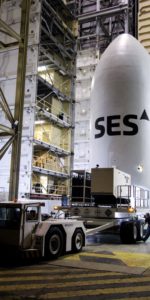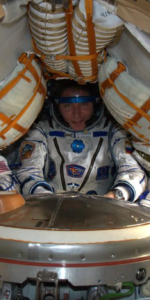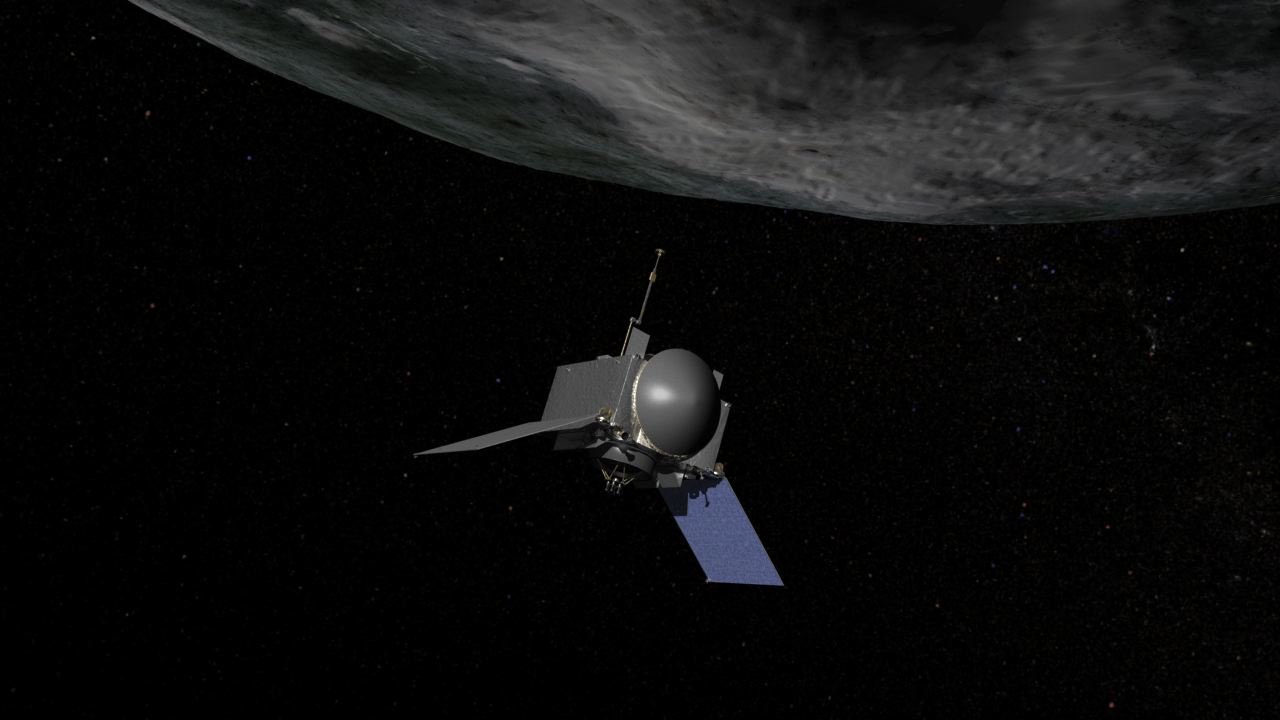
This coming September, a new NASA spacecraft, OSIRIS-REx, will be heading toward an asteroid to collect samples which will later be brought back to Earth. This is the first time for such a sample return mission to an asteroid by a U.S. spacecraft, but there’s also another unique aspect to this mission: Artists, and space enthusiasts in general, are being invited to submit some of their work to be included onboard the spacecraft.
Submissions can include a wide variety of artwork such as sketches, photographs, graphics, poems, songs, or short videos, and should reflect on the theme of what it means to be an explorer. They will be included on a microchip onboard the spacecraft.
“We’re thrilled to be able to share the OSIRIS-REx adventure with people across the Earth, to Bennu and back,” said Dante Lauretta, principal investigator of the OSIRIS-REx mission from the University of Arizona in Tucson. “It’s a great opportunity for people to get engaged with the mission early and join us as we prepare for launch.”
As Bill Nye noted, “You’ll be part of humankind’s exploration of the Solar System – How cool is that?”
The OSIRIS-REx team would like the artists involved to ponder the following questions:
- What does it mean to be an explorer like OSIRIS-REx?
- What might this mission teach us about ourselves and our universe?
- How are we as a people stretched and deepened by explorations beyond our Earthly home?
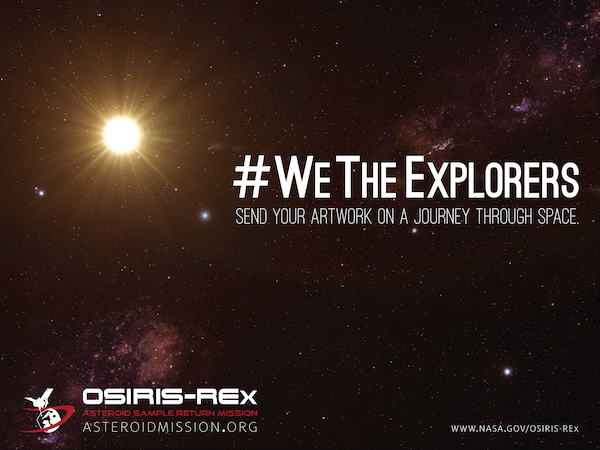
The deadline for submissions is March 20, 2016. Use the tag on Twitter (@OSIRISREx) or Instagram (@OSIRIS_REX) and include the hashtag #WeTheExplorers. More information is available here.
Previously, NASA had invited the public to send their names to Bennu on a microchip for a project called “Messages to Bennu.” More than 442,000 names were submitted in total. The idea of sending personal artwork as well is an even more creative way for the public to take part in this mission.
“The development of the spacecraft and instruments has been a hugely creative process, where ultimately the canvas is the machined metal and composites preparing for launch in September,’ said Jason Dworkin, OSIRIS-REx project scientist. “It is fitting that this endeavor can inspire the public to express their creativity to be carried by OSRIS-REx into space,” he added.
“Space exploration is an inherently creative activity,” said Lauretta. “We are inviting the world to join us on this great adventure by placing their art work on the OSIRIS-REx spacecraft, where it will stay in space for millennia.”
Bennu, which used to be called Asteroid 2012 DA14, passed quite close to Earth on Feb. 15, 2013, within 22,000 miles (35,405 kilometers), which is less than 1/10 the distance to the Moon. Bennu typically makes such a close pass about every six years. Bennu itself is rather small, about 538 yards (492 meters) in diameter. From these and upcoming passes, it has been estimated that there is a good chance Bennu could collide with Earth in the year 2182. That is still a long ways off, but it makes Bennu an even more interesting, and perhaps prudent, target for exploration. Along with this, there are three main reasons why Bennu was chosen as the target for a sample return mission:
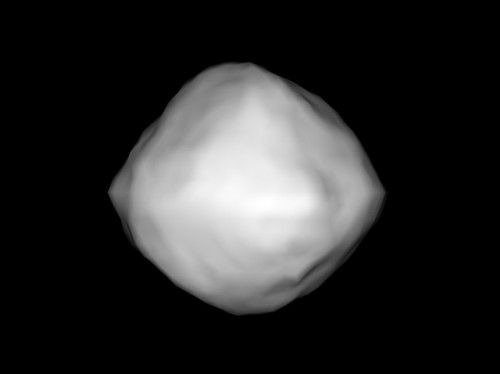
- Proximity to Earth
The closest asteroids to Earth are Near-Earth Objects (NEOs). As their name suggests, NEOs are objects that orbit within 1.3 AU of the Sun. For a sample return mission like OSIRIS-REx, the easiest asteroids to visit will travel between 1.6 AU and 0.8 AU. The ideal asteroid will have an Earth-like orbit, with low eccentricity, and inclination. At the time of asteroid selection in 2008, there were over 7000 known NEOs, but only 192 had orbits that met these criteria. - Size
Asteroids with small diameters rotate more rapidly than those with large diameters. With a diameter less than 200 meters, an asteroid spins so rapidly that the loose material on its surface (regolith) can be ejected from it. The ideal asteroid will have a diameter larger than 200 m so that a spacecraft can safely come into contact with it. This size requirement reduced the number of candidate asteroids from 192 to 26. - Composition
Asteroids have been divided into different types based on their chemical composition. The most primitive asteroids are carbon-rich and have not significantly changed since they formed nearly 4 billion years ago. These asteroids contain organic molecules, volatiles, and amino acids that may have been the precursors to life on Earth. Of the 26 asteroids left on the list, only 12 had a known composition, and only five were primitive and carbon-rich.
OSIRIS-REx (Origins, Spectral Interpretation, Resource Identification, Security-Regolith Explorer) will be launched this coming September, in a launch window which begins Sept. 3 and lasts for 39 days. It will be launched from Cape Canaveral, Fla., on an Atlas V rocket in the 411 configuration. The approach phase begins in August 2018, with surveying of the asteroid starting in October 2018 and lasting nearly a year. About 2 ounces (57 grams) of material will be collected by the spacecraft from the surface of the asteroid and stored in a Sample Return Capsule for return to Earth in 2023.
Bennu orbits the Sun at an average speed of 63,000 mph (101,389 kph). To reach Bennu, OSIRIS-REx will perform a series of braking maneuvers, slowing down by 1,186 mph (0.53 km/s), resulting in a relative approach velocity of ~0.45 mph (20 cm/s).
The spacecraft will study the mineralogical and chemical composition of the asteroid. The main objectives of the OSIRIS-REx mission include:
- Return and analyze a sample
- Map the asteroid
- Document the sample site
- Measure the orbit deviation caused by non-gravitational forces (the Yarkovsky effect)
- Compare observations at the asteroid to ground-based observations
The survey phase of Bennu includes:
- Preliminary Survey searches for asteroid plumes and natural satellites, and measures the Yarkovsky acceleration of Bennu.
- Orbital A allows the Flight Dynamics Team to transition from star-based navigation to landmark-based navigation using images of Bennu’s surface.
- In Detailed Survey several instruments work together to map Bennu and determine its global spectral, thermal, and geological properties.
- Orbital B continues to map Bennu at higher resolutions, with a focus on candidate sample sites. At the end of Orbital B a sample site will be selected.
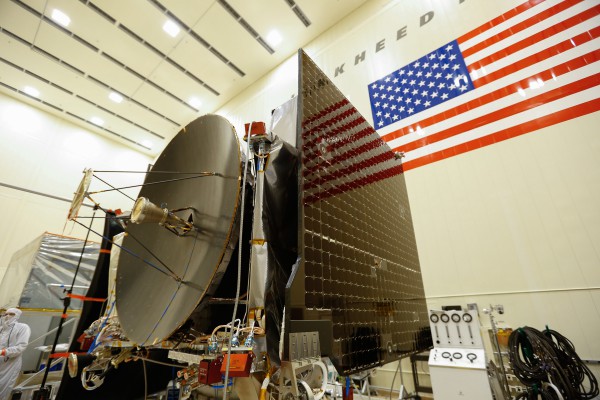
The sample return aspect of this mission is essentially similar to the Stardust mission to Comet Wild-2, which returned samples of that comet to Earth in 2006.
“The Stardust sample return capsule carried inside cometary material it gathered from Comet Wild-2 during a flyby in January of 2004,” said Don Brownlee, Stardust principal investigator from the University of Washington in Seattle. “The spacecraft deployed a tennis racket-like, aerogel-lined collector, and we flew the spacecraft within 150 miles (241 kilometers), capturing particles from the coma as we went.”
This time, however, the target is an asteroid instead of a comet. Studying ancient bodies such as asteroids and comets will help scientists learn more about how the Solar System formed, since they are leftover relics of that process, which also resulted in planets, dwarf planets, and moons. The mission may also be a stepping stone to an Asteroid Redirect Mission (ARM), where NASA plans to send astronauts to capture a boulder off a nearby asteroid and place it in orbit around the Moon for further study.
So if you are an artist or just a creative space enthusiast, send in your artwork for a unique opportunity to have it sent to a distant asteroid, and a part of you can visit this far-off world.
More information about the Bennu mission is available here, including a cool interactive timeline of the mission.
Want to keep up-to-date with all things space? Be sure to “Like” AmericaSpace on Facebook and follow us on Twitter: @AmericaSpace
Missions » OSIRIS-REx »



